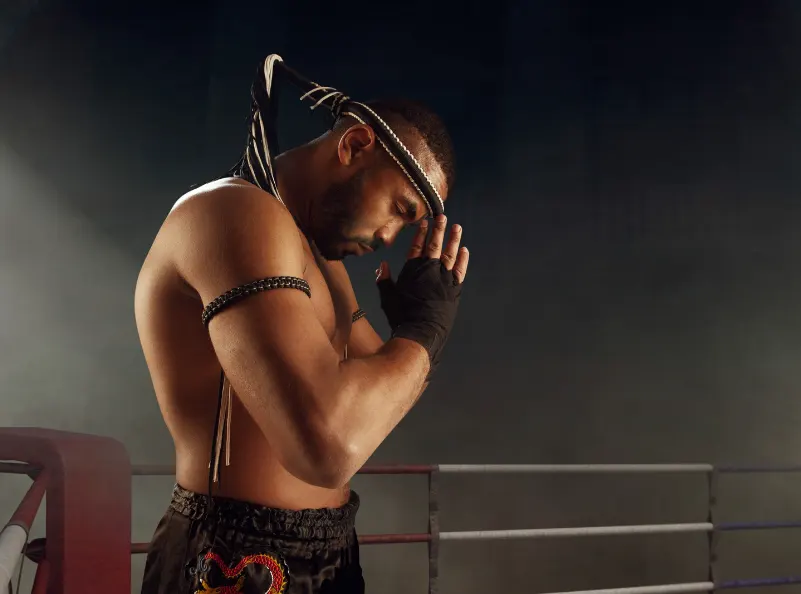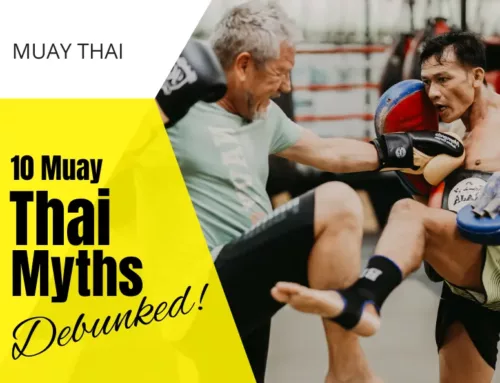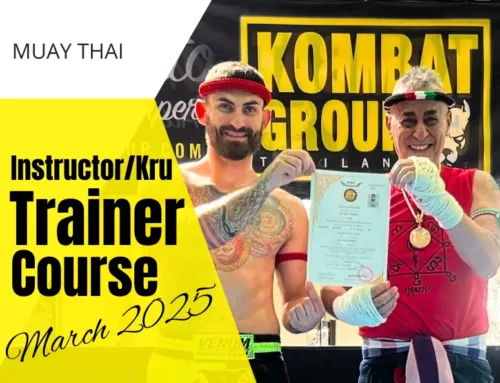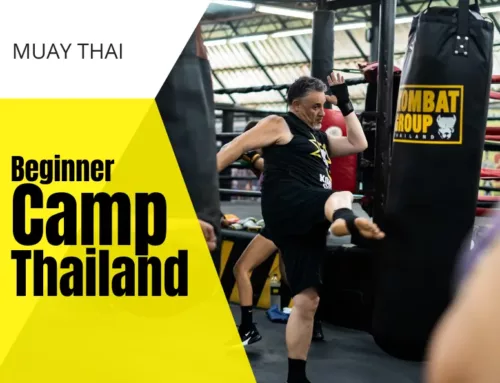While King Rama V (1853-1910) popularized and established Thai boxing as the national sport, it would continue to evolve into what we now know as Muay Thai. With the introduction of British Boxing in Thailand, Muay Thai began borrowing many of its rules for its own development. Thailand built its first stadium in 1921 thus ending its tradition of holding competition in an open court. Under the reign of King Rama VII (1925-1935), rounds, weight classes, gloves, point systems and the like emerged further formalizing the sport. Muay Thai kept many of its traditions, however, that have made the art uniquely Thai. This article will cover many of the unique traditions and rules of Muay Thai.
Khat Chueak: มวยคาดเชือก
Earlier Muay Thai fighters wrapped their hands in rope. They often dipped their hands in a tar to bind the threads and further harden the surface. Upon agreement with their opponents, some fighters even sprinkled in broken glass into the wraps. Others made knots over the knuckles to better protect the hand and further damage their opponent. The death of a boxer in the 1930’s inspired the authorities to mandate the use of boxing gloves in competition. Khat Chueak is still often seen today in Muay Thai but with heavy padding to prevent serious injury.
Wai Khru Ram Muay: ไหว้ครูรำมวย
Wai Khru, literally “greet teacher”, is a ritualistic dance in almost all artistic performance in Thai culture. Occurring before a given performance, the student performs the Wai Khru to pay respect primarily to his or her teacher but also to elders, ancestors, Kings and Gods. Ram Muay, literally “dance boxing”, is the more specific ritual boxers perform prior to competition. Not all boxers must perform a Wai Khru prior to competition. Many boxers simply “seal” the ring by walking along the ropes and pausing briefly in each corner.
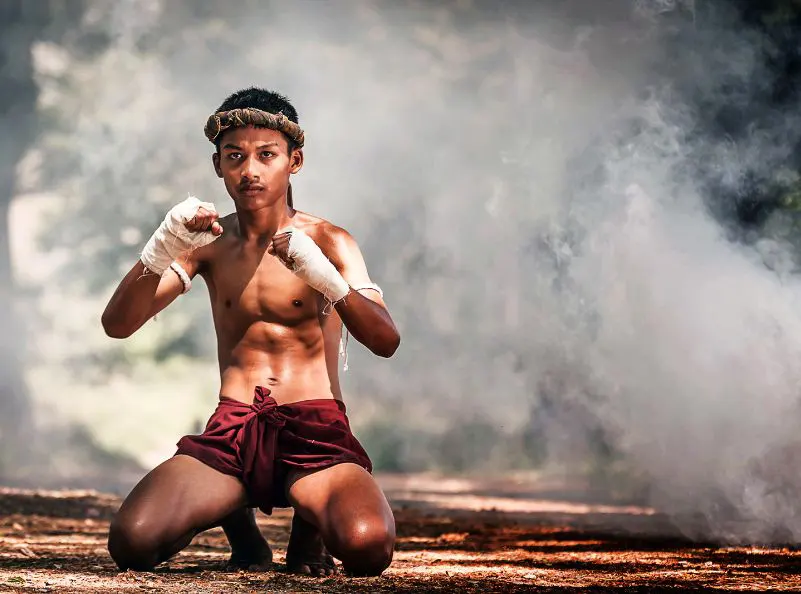
Mongkon: มงคล
Muay Thai fighters will wear a Mongkon, a traditional headgear, prior to bouts. Traditionally teachers awarded these to students having become knowledgeable fighters. Monks often bless the Mongkon and fighters may believe it holds special power. Only the fighter and the coach handle the Mongkon; it never is to touch the ground and is taken off prior to the bout starting.
Pra Jiad: ประเจียด
The Pra Jiad is a piece of cloth or rope tied around the arms of Muay Thai fighters. Fighters wear them both before and during the competition; traditionally believed to be good luck from a fighter’s family. Some traditions used a piece of the boxer’s mother’s dress to signify her blessing for good health and safety.
Sarama: สะระหม่า
This is the exciting, yet haunting and almost maddening music of Muay Thai. It starts quiet and slow during the Ram Muay and picks up pace as the fight progresses. The musicians increase the tempo and volume as the action picks up in a fight. The four instruments are the Pi Java (Javanese Clarinet), Klong Kaak (set of drums), Ching (cymbals) and Kong Mong (heavy drum).
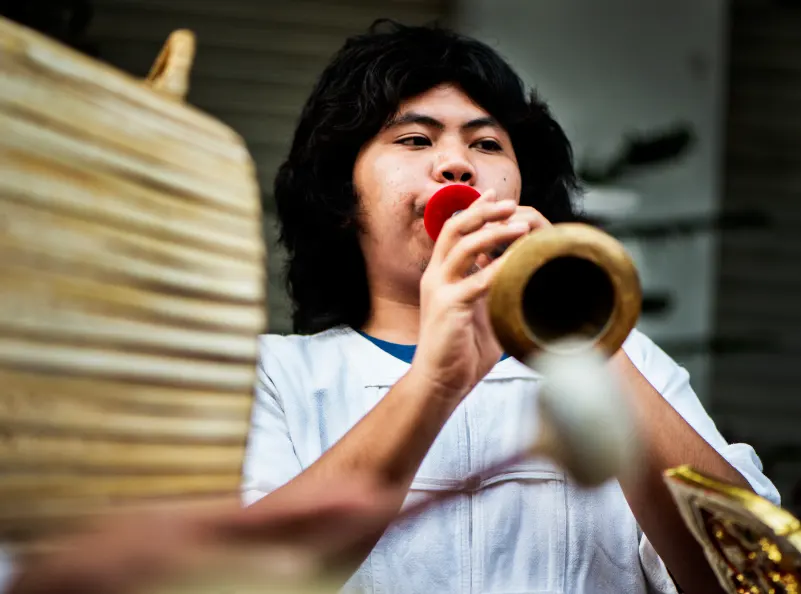
Muay Thai: มวยไทย
While many traditions of Muay Thai remain, so does its brutality. Rules of Muay Thai have developed while still keeping the sports integrity. Muay Thai is the “art of eight limbs,” a term derived from its different points of contact. Practitioners utilize fists, elbows, knees and feet. Ten limbs would actually describe it more accurately as fighters rely heavily on their shins as well as feet. Certain moves, such as eye gouges and kicks to the groin, are now illegal, but the sport still holds plenty of danger. Every part of the body is a potential target excluding eyes and groins. Flying, downward elbows are legal; strikes that may land with the momentum of the boxer’s entire weight to the top of the opponent’s skull.
Muay Thai bouts consist of five rounds. Each round is three minutes in length with a two minute rest. Between rounds, two seconds can accompany the fighter in his ring for massage, water, cut control and advice. Fights stop when one opponent hits the ground unlike MMA, but boxers can often get away with striking their opponent as he falls. 10 second counts are given if a boxers suffers a knockdown, and the match ends if he cannot continue. Sweeps and throws, however, do not count as a knockdown and boxers must immediately resume fighting after getting up.
Judges score the matches as a whole and not by rounds. For example, a fighter winning the first three rounds and losing the last two would unlikely win the match, even though he technically won more rounds. This is because he progressively lost control of the fight. Our next article will provide more detail on the scoring of Muay Thai as well its different styles of combat.

